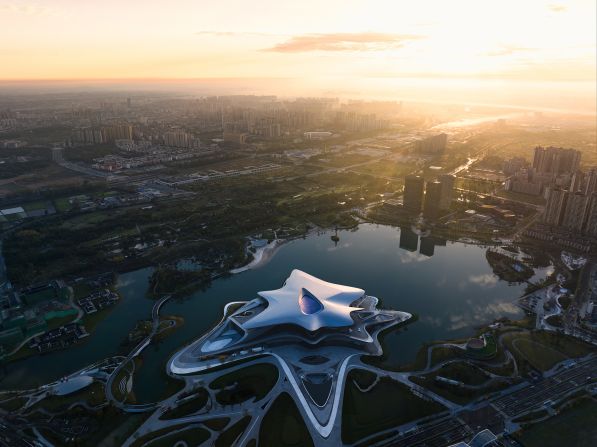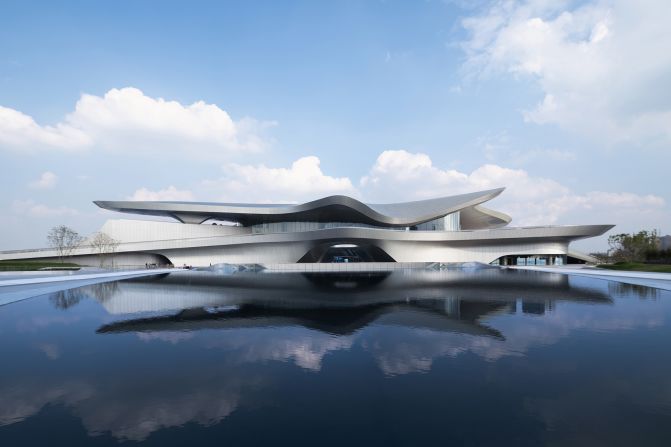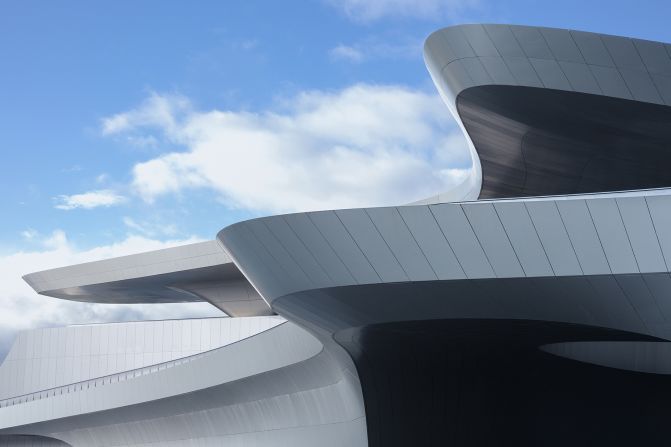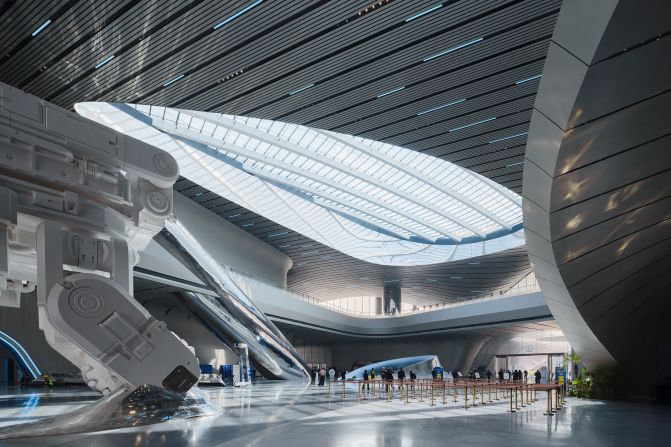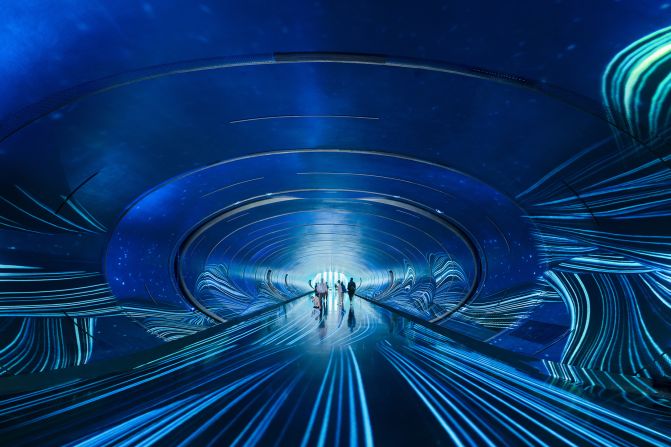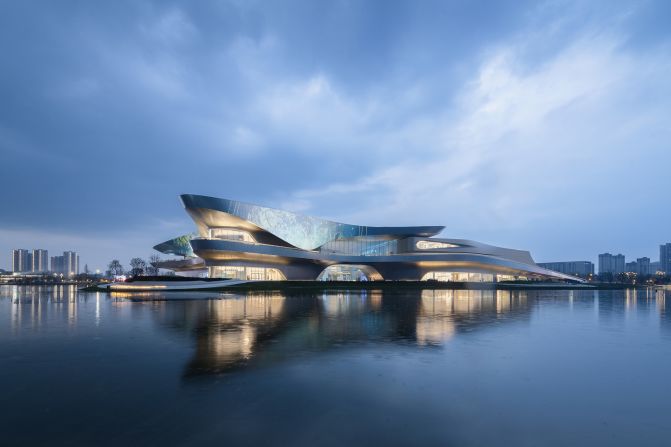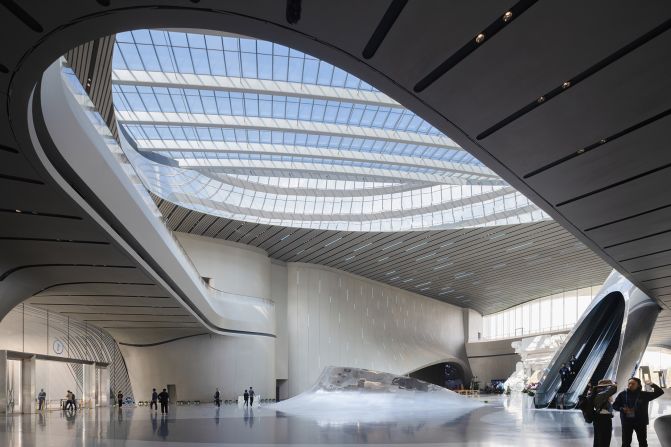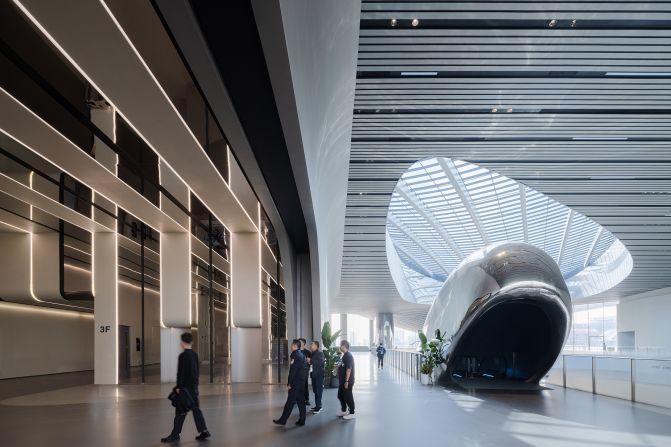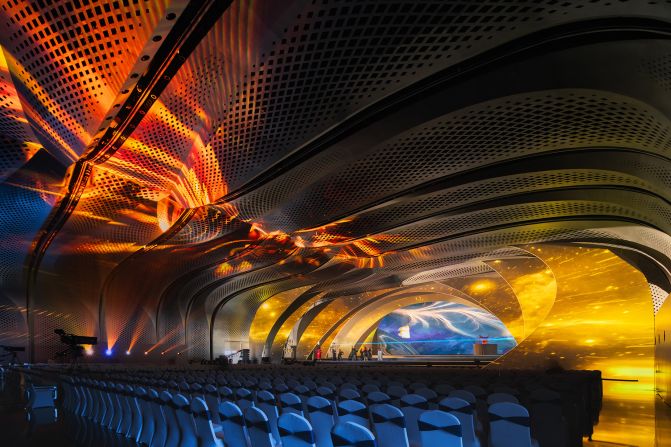The seven-point metallic star floats on the glassy surface of the lake, reminiscent of a far-flung future civilization, or a spaceship touching down on an alien planet. It looks like something straight out of science fiction. Which it is, in a way: it’s the brand new Chengdu Science Fiction Museum in the capital of Sichuan province in Southwest China.
From one side, the dynamic roof mimics the sloping mountains in the distance; from another, the canopy takes on the appearance of a cloud, its cantilever arches suspended above seamless panes of glass.
“From every angle, it will always look different; it will always look unusual or unexpected,” said Paulo Flores, one of the project directors at Zaha Hadid Architects, which designed the museum.
Perhaps more unexpected than the design itself is the time it took to build.
The museum was commissioned in 2022 to host this year’s 81st annual World Science Fiction Convention, nicknamed Worldcon. A building of this size and complexity would typically take four to five years to build, says Flores. But the 59,000 square-meter building — which is three times the size of the Sydney Opera House — went from concept to completion in just 12 months.

But despite the tight turnaround for Flores and his team, it was the dream assignment. “Science fiction has always been a very important source of inspiration for our designs,” said Flores. “Science fiction has always taken that leap forward, looking at what technology is currently and what technology could evolve into.
“We want to be part of that movement of creating what the future looks like — not only visually, but also technologically.”
Daring digital designs
The London-based architecture firm is no stranger to technology. The firm’s namesake, Zaha Hadid, was a pioneer in digital design, and the tools she used enabled her to create dynamic, futuristic buildings.
“We can only create these types of geometries using polygonal modeling software,” explained Flores, which creates a “three-dimensional simulation of the building.”
With this project, the technology was not only key to creating an ambitious design, but also executing it rapidly. Just two weeks after the firm won the competition, construction on the project began.
Using a variety of design software, including digital modeling analysis, the team was able to accelerate the timeline, and ensure that everyone, from architects to materials manufacturers to construction workers, was on the same page.
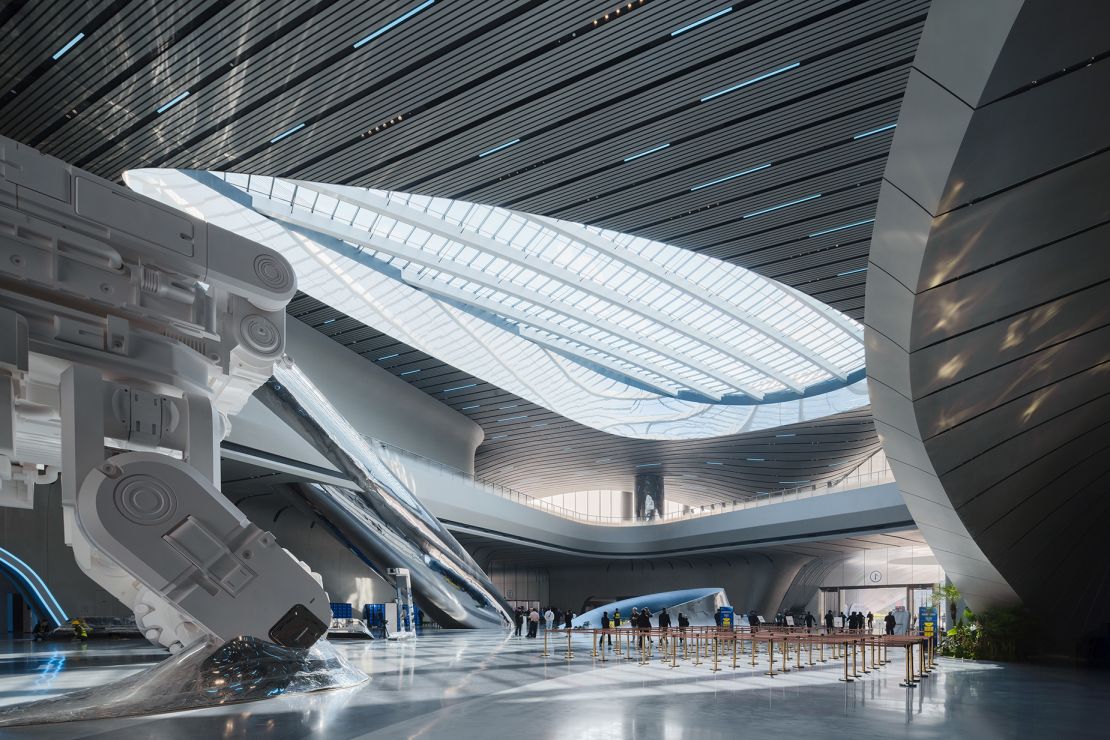
Satoshi Ohashi, another one of the project directors, said that construction and design happening in parallel “could not have been done without these new tools.”
Ohashi added that the digital modeling analysis allowed the team to optimize the building’s structure for Chengdu’s climate. By analyzing weather and environmental parameters, the software informed decisions about the size and angle of the roof overhang to protect interiors from direct sunlight.
Green tech is integrated to minimize the building’s operating impact, too, with solar panels embedded into the expansive roof to help power the building, and skylights and floor-to-ceiling windows to reduce the need for artificial light during the day.
The team also had to source materials locally to save time and come up with simple ways of making their concept a reality. For example, they created a modular aluminum panel system that sits “underneath the skin” of the roof canopy, which creates “smooth and seamless” curves while also making it quick to produce in a factory, said Ohashi.
City of the future
Already home to more than 20 million residents — and growing — Chengdu has rapidly expanded in the last few decades.
Earlier this year, the city topped China’s new first-tier cities list, which ranks metropolises based on factors like resident lifestyle, commercial opportunities, and transport.
The Science Fiction Museum is part of a larger “Future City” development in the Pidu district, outside of the city. Known as Chengdu Future Science and Technology City, the 4.6-square-kilometer (1.8-square-mile) site will house multiple new universities, laboratories and offices.
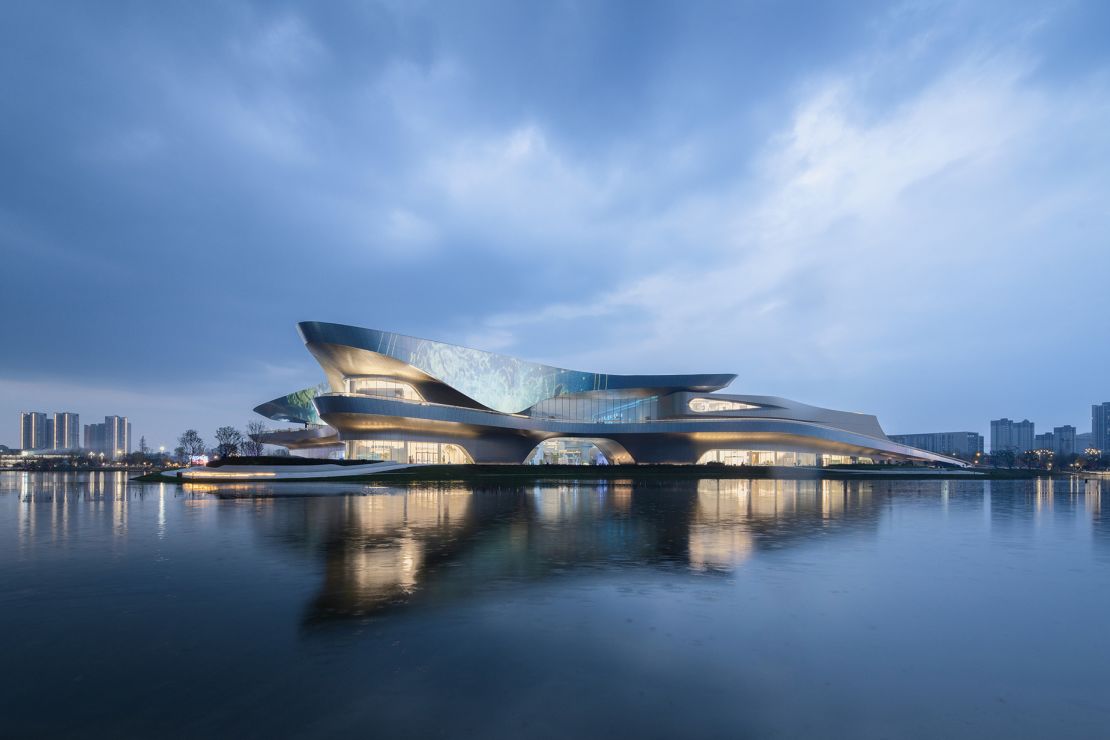
“Part of that growth is also this attention to the future, science and technology, integrating that into the city, and growing that economy,” Ohashi explained.
The nation’s multi-billion dollar “science fiction industry” includes publishing and film releases, with Chengdu at the center. Chengdu is also the birthplace of Science Fiction World, one of the world’s most-read sci-fi magazines, which was founded in the city in 1979.
The museum opened on schedule to host its inaugural event — the first time Worldcon has been hosted in China, and only the second time in Asia. Dave McCarty, vice-chair of Chengdu Worldcon and an organizer with the event for two decades, described the museum as “the best facility by far that the Worldcon has ever been hosted in,” and said having a purpose-built location made the event feel more special compared to hosting it in “cookie-cutter” convention centers.
“Having that dedicated space makes a wonderful home for science fiction,” McCarty added.
With its successful bid to host the 81st Worldcon, Ohashi hopes that the new museum and event space can become “an iconic landmark that will represent their science fiction industry” and will nurture the ambitions of the burgeoning “Future City.”
“They can now say that they are China’s science fiction capital,” he said.
